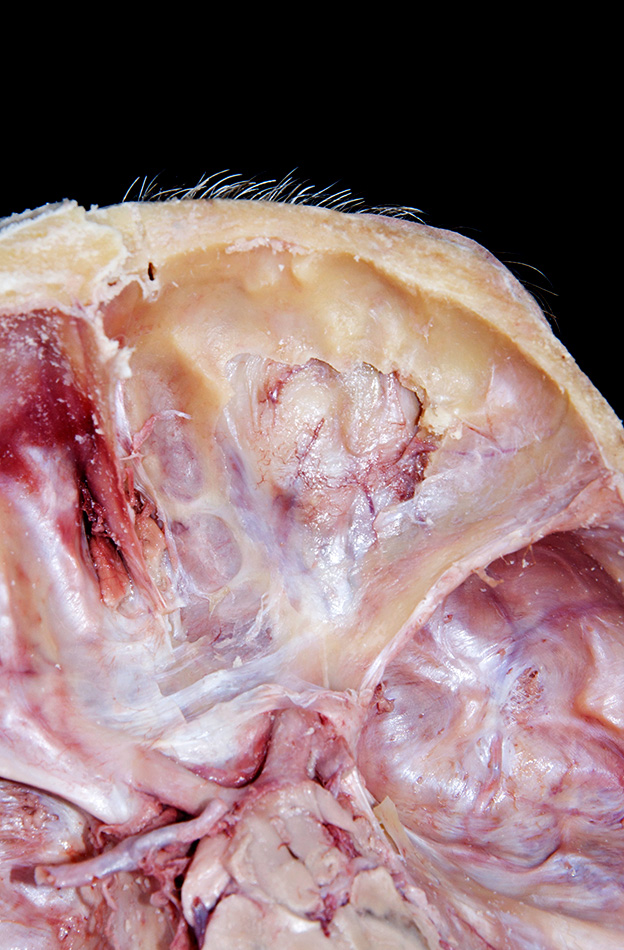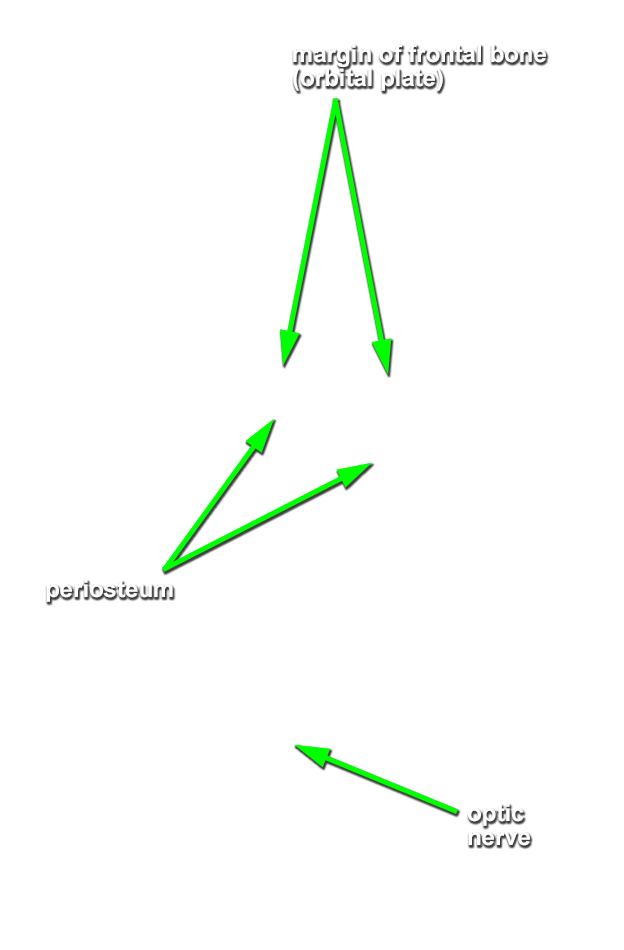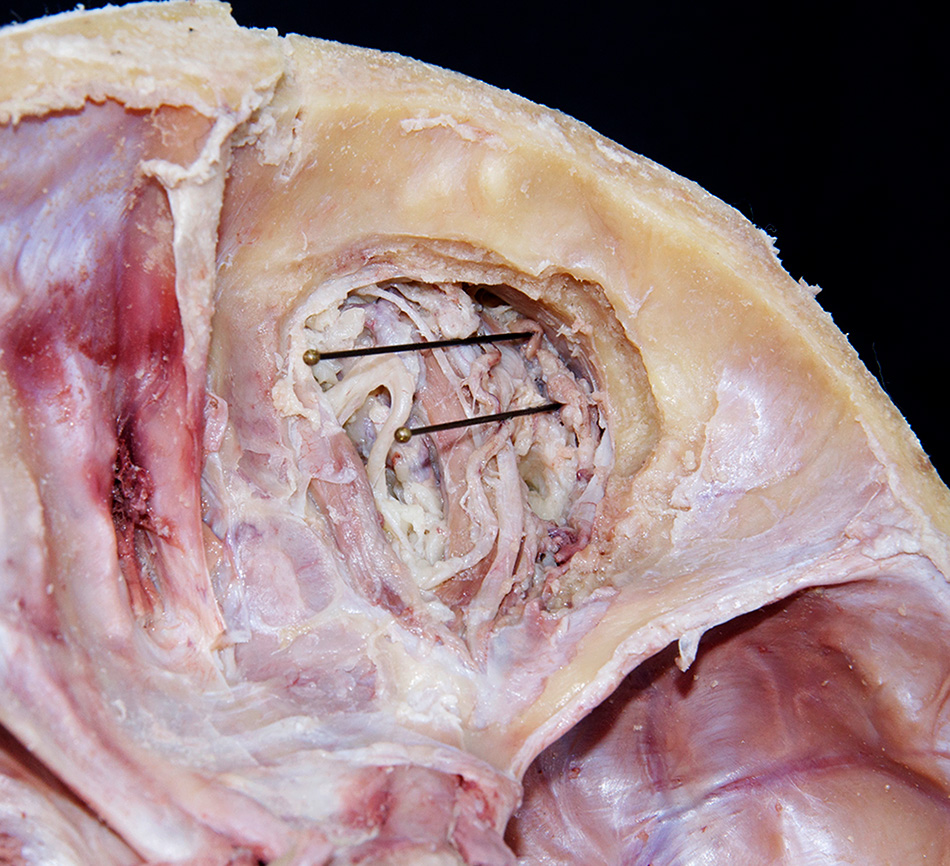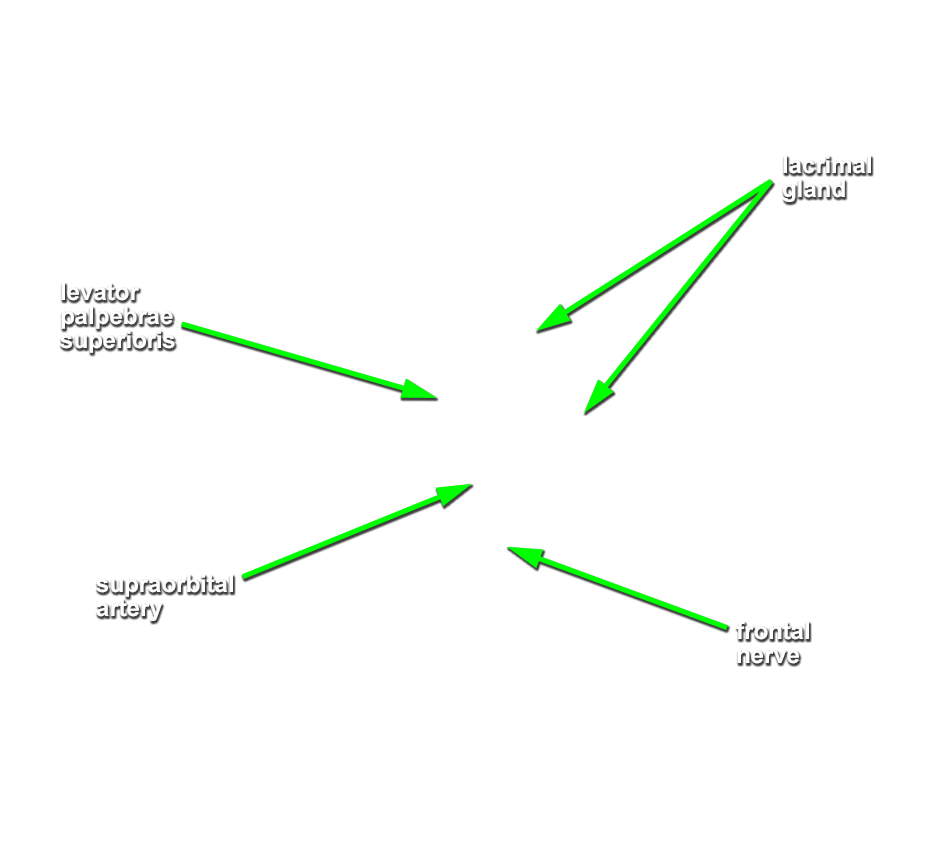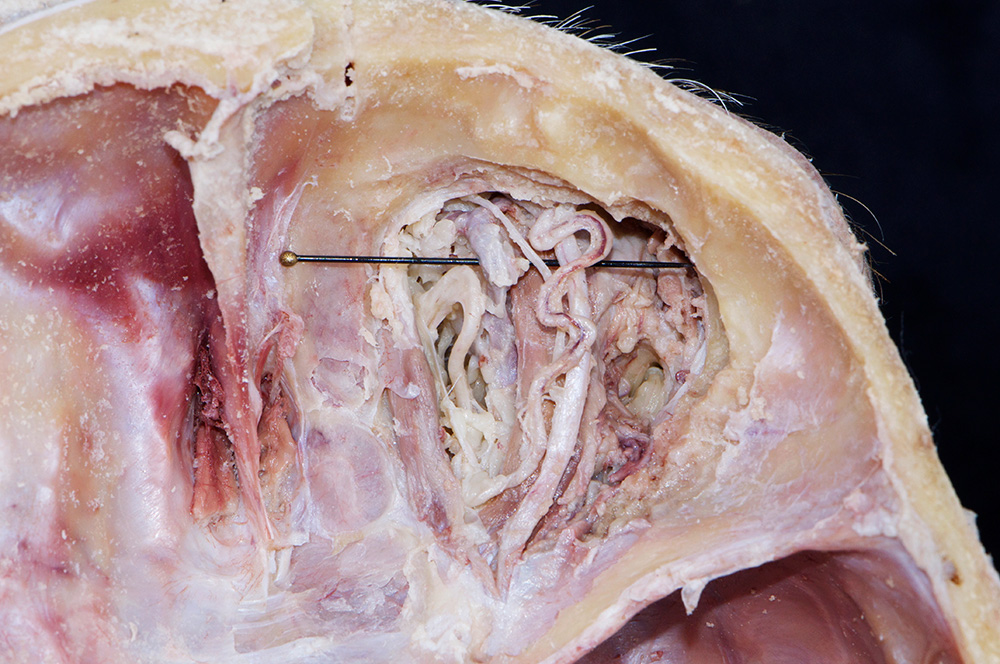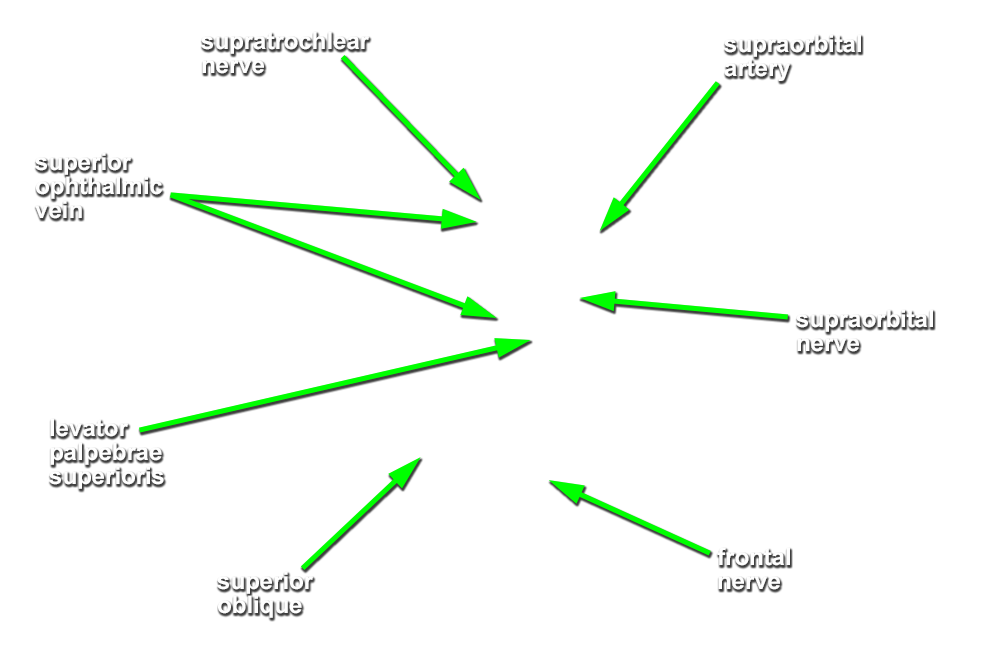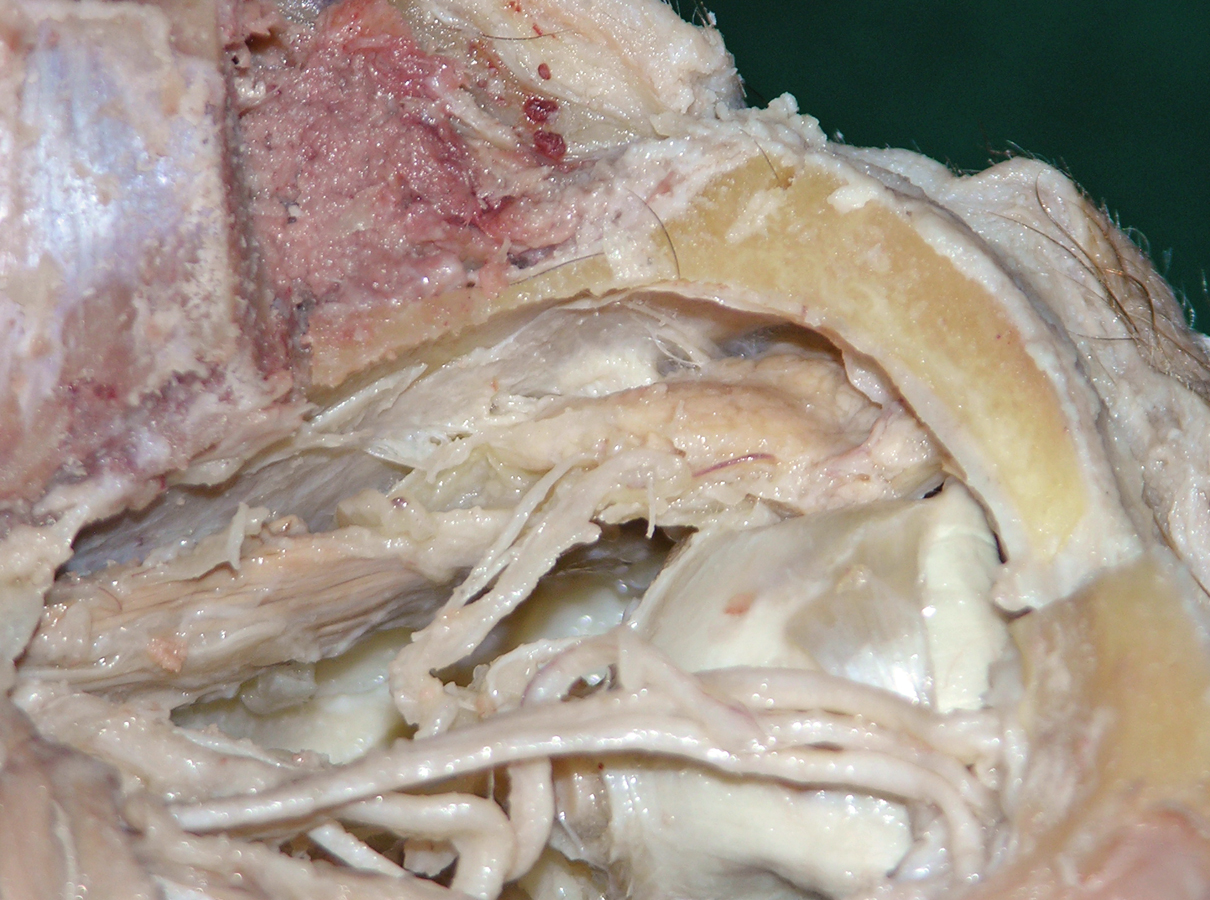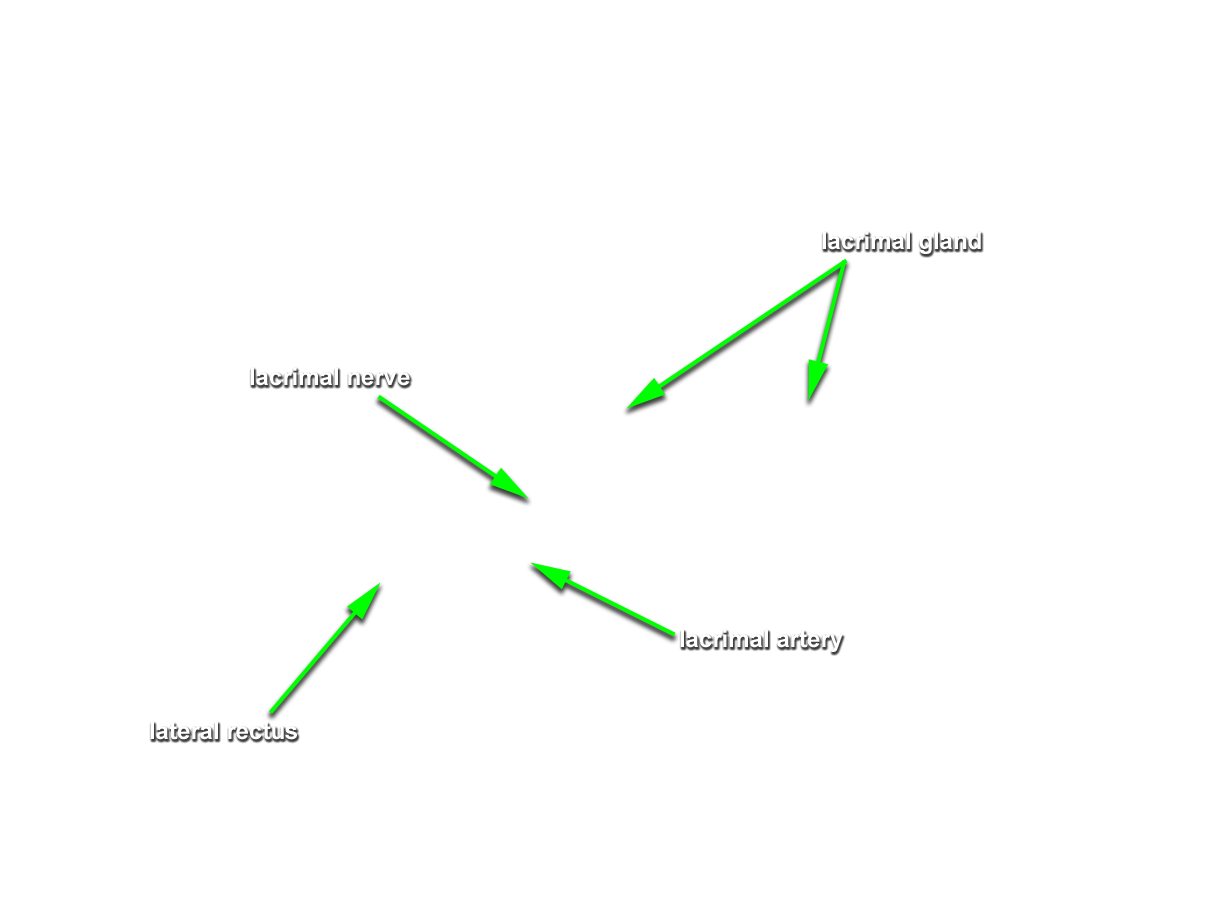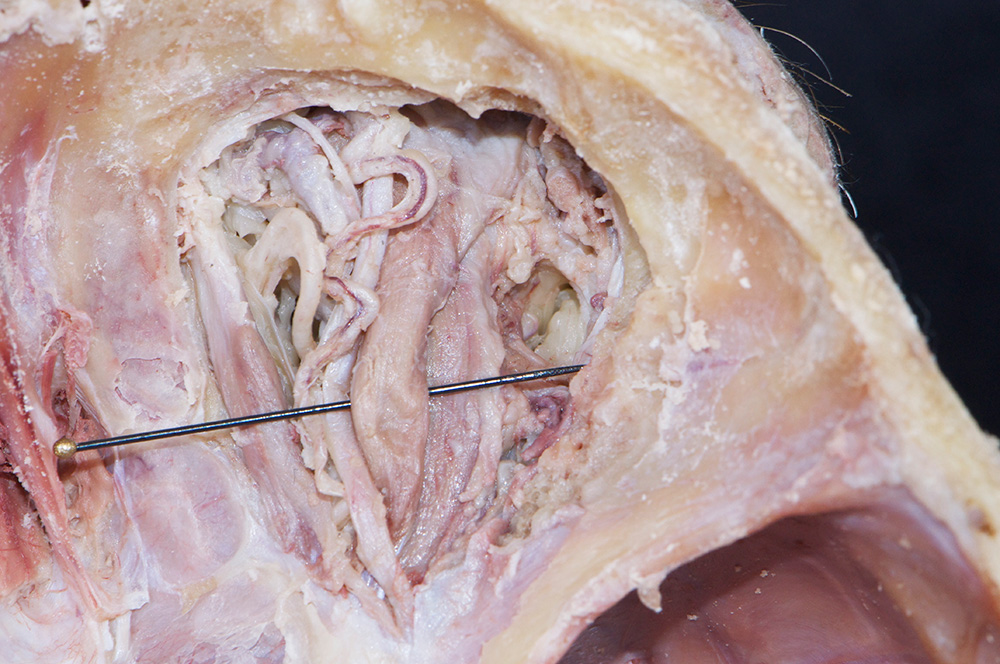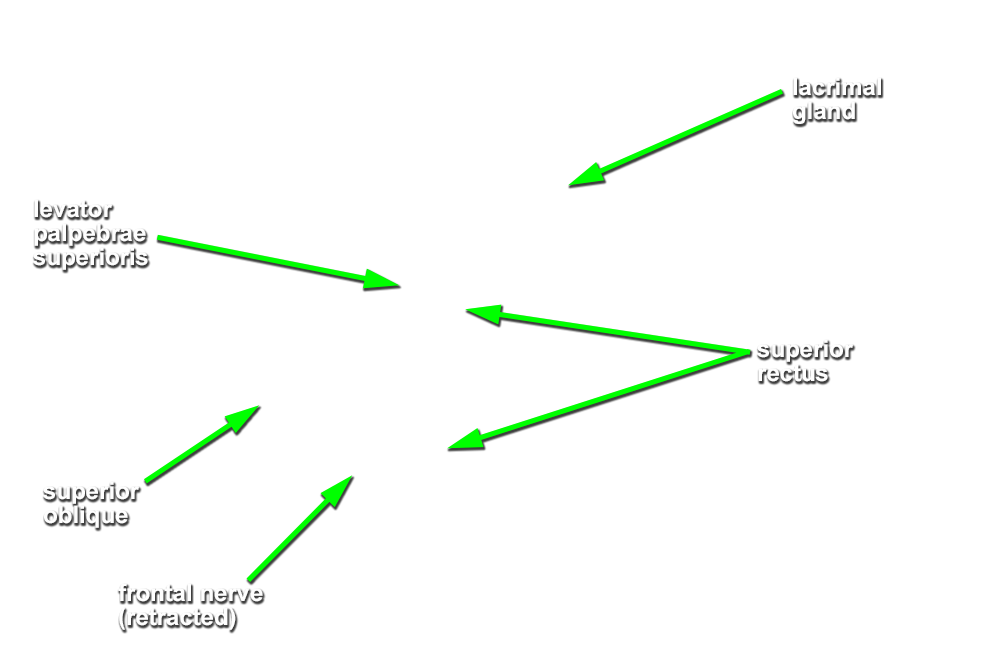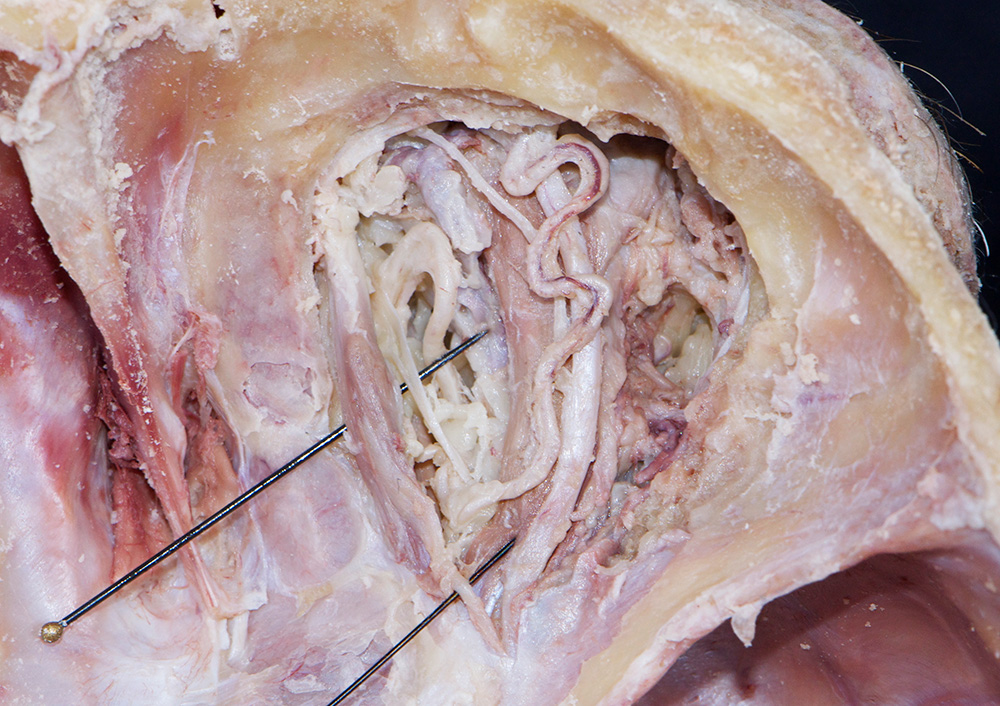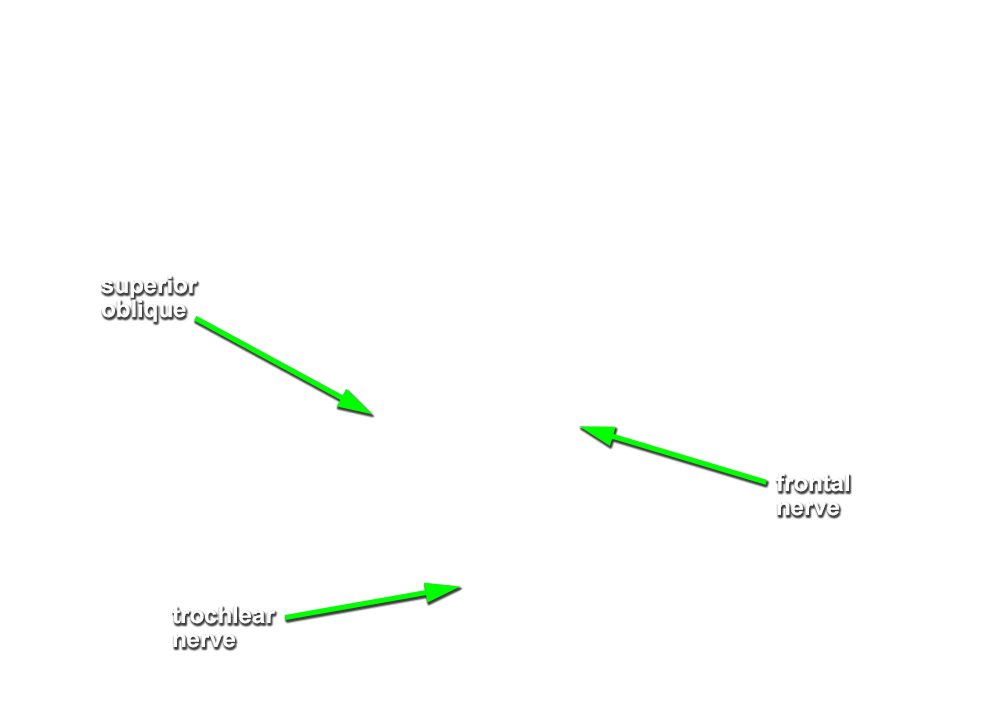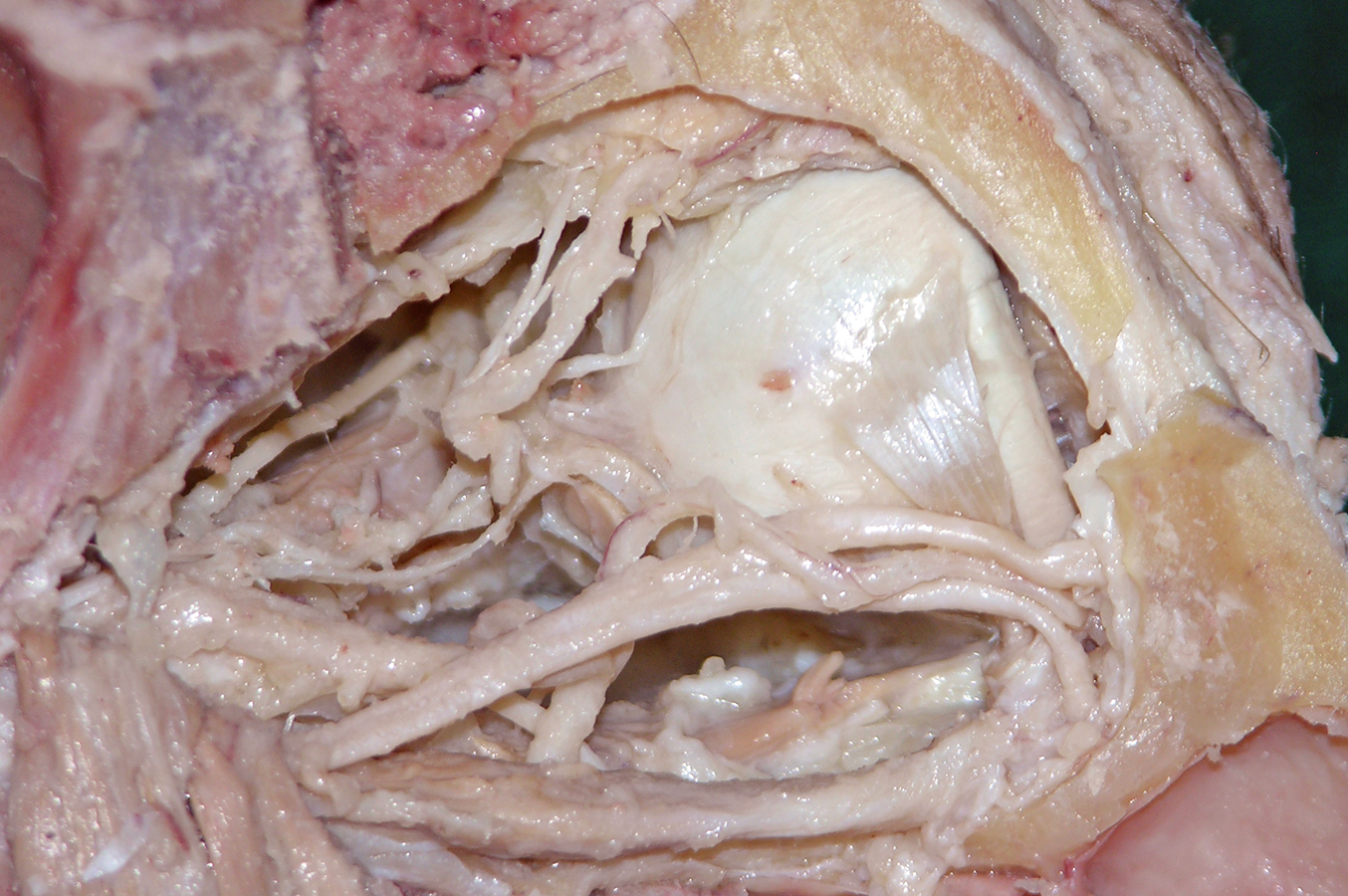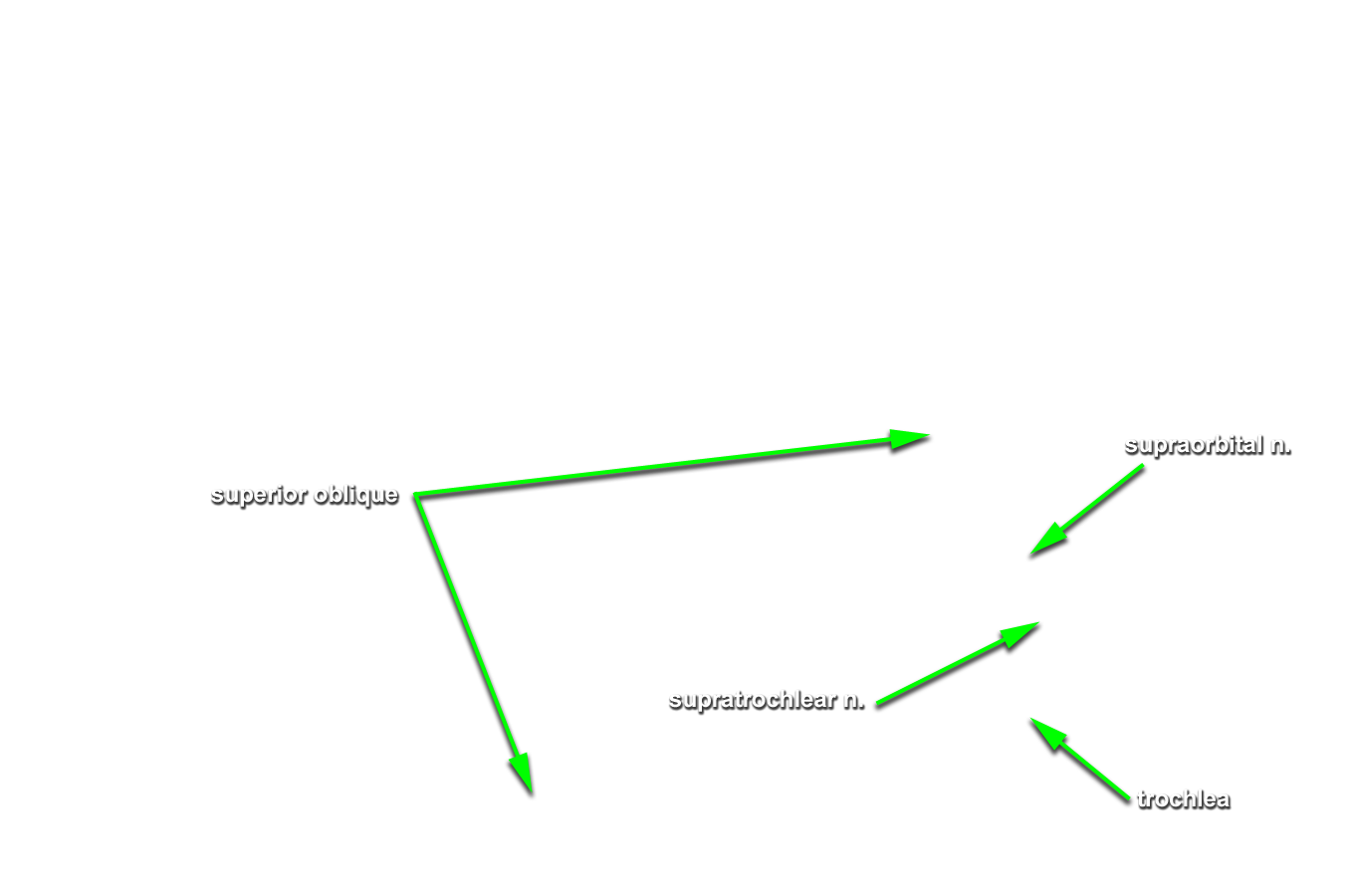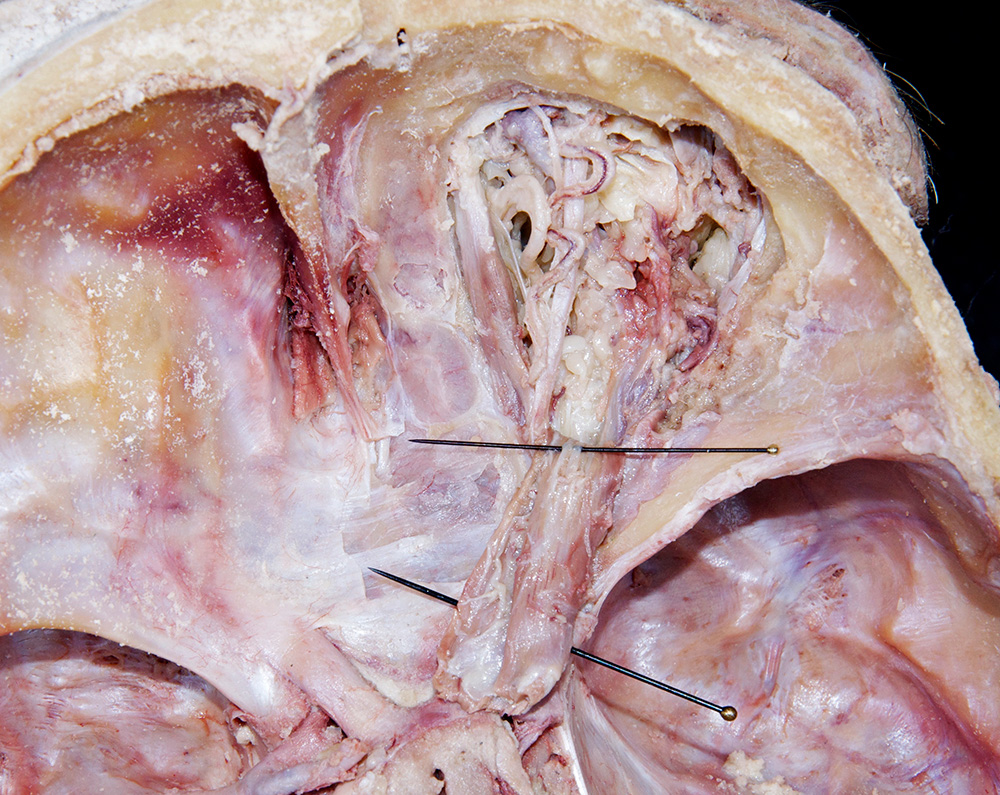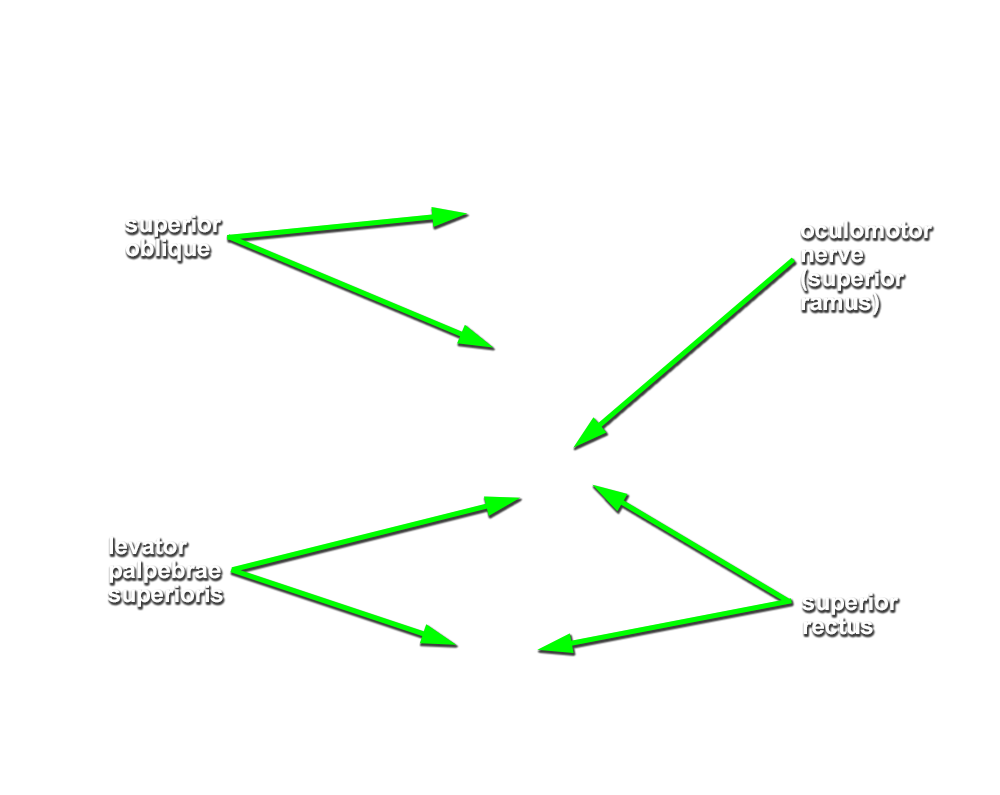Use a superior approach to identify the contents of the orbit on the side of the head without the brain. Use the anterior approach (Steps 9 and 10) to identify the contents of the orbit on the opposite side of the head.
- Identify the lacrimal gland, frontal nerve, supraorbital nerve and artery, and superior ophthalmic vein. Attempt to identify the lacrimal nerve. (G 7.38A;N 88;Gl 41.9)
- Identify the
levator palpebrae superioris,
superior rectus and
superior oblique muscles. (G 7.38A;N 86;Gl 41.12) Identify the
trochlear nerve entering the proximal (posterior) superior aspect of the superior oblique muscle. Attempt to identify the superior oblique tendon traversing the trochlea.
Important Relationship
- The superior oblique (tendon) muscle passes inferior to the superior rectus muscle.
- The superior oblique muscle is positioned superior to the medial rectus muscle.
- Reflect the levator palpebrae superioris and superior rectus muscles in the posterior direction and identify the superior ramus of the oculomotor nerve. (G 7.38A;N 88;Gl 41.12B)
